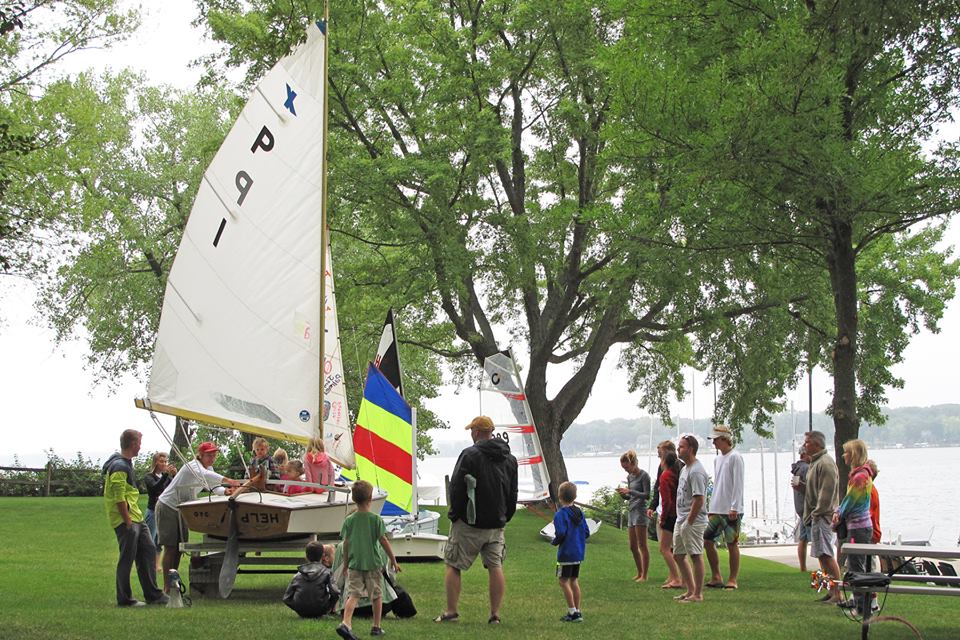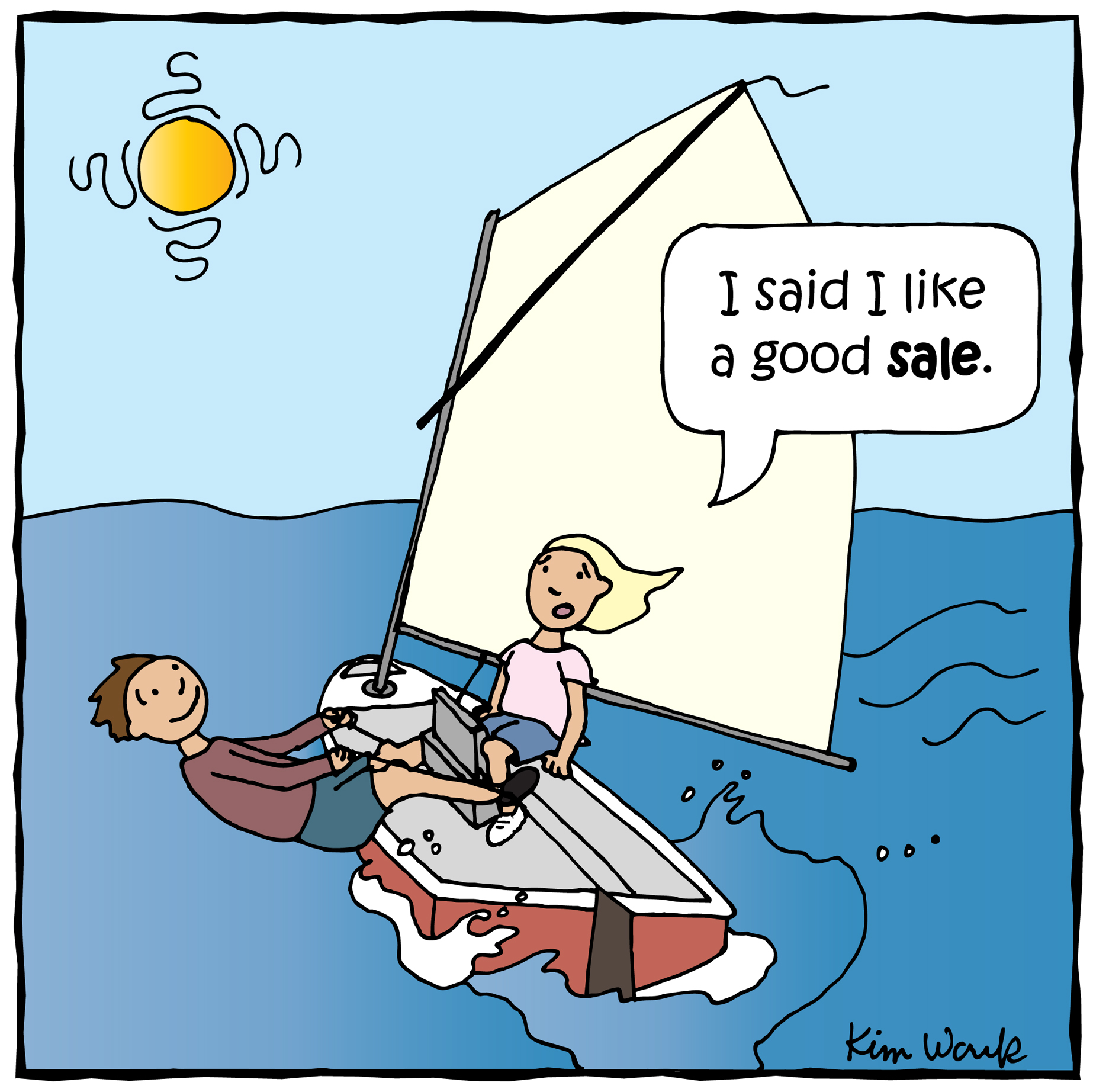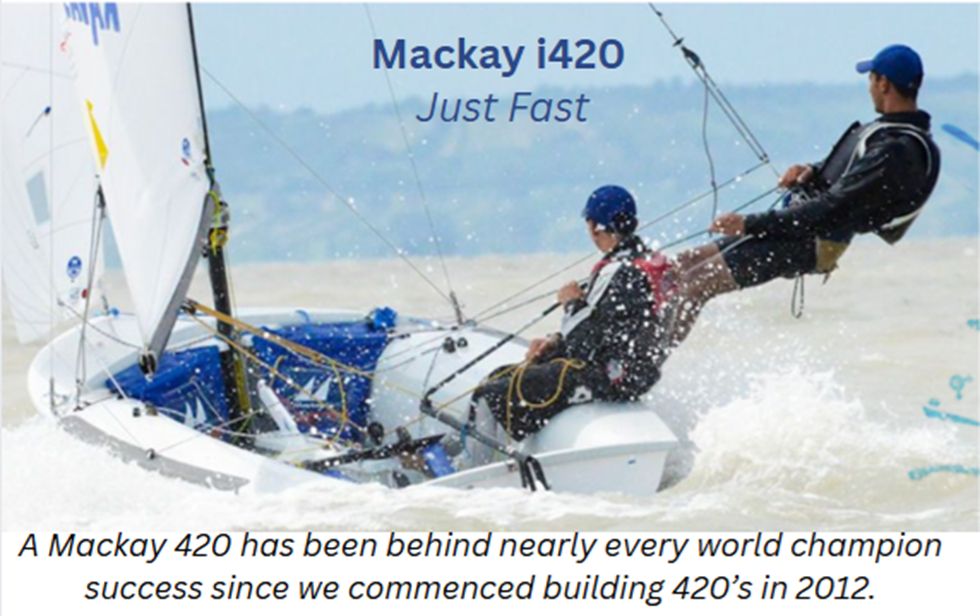Since 2007, Sail1Design has provided a vital, active Career Center and Job Board. Here, you can post your resume, search marine/sailing industry jobs, or post a job and find your next great employee.
SAILING/MARINE INDUSTRY CAREER CENTER & JOB BOARD
We offer sailing’s #1 Career Center and Job Board, always chock full of incredible sailing job opportunities. Our comprehensive career center also offers job seekers the ability to create their own web page, highlighting their experience and posting their resume. Likewise, employers can search our resume database to find the right match for that open position. Sail1Design is proud also to be the official job board of the Intercollegiate Sailing Association (ICSA), and the US High School Sailing Association (ISSA).
Sail1Design also offers:
MARKETPLACE & PROFESSIONAL BROKERAGE
Unique to the industry, Sail1Design hosts and manages an active private, by-owner marketplace, focusing on performance and one-design sailboats & gear. For all boats under 25′, our ads are free. What makes us different is that we also provide, side-by-side, professional brokerage services as well. We have had great success helping our sailing clients market and sell their boats, using our powerful client base, social media, and the brokerage industries multiple listing service to ensure your boat gets noticed.
AIRWAVES NEWS & CALENDAR
S1D also hosts Airwaves, an interactive, user fed Sailing Calendar and informative Sailing News, Articles, tips, & more. Airwaves has developed a great niche in the sailing publication world, and now boasts a seven-member staff of dedicated sailors, all contributing to our varied content.
Blog
Communication Breakdown: Somethin’ You Outta Know
By Airwaves Writer Rachael Silverstein
Communication and team Trust. At one point or another in our sailing careers, most of us have encountered the challenge of dealing with a teammate who forgets the age-old saying, “there is no I in ‘team.’” These people, who I often think of as forever-singlehanded sailors, do not always realize their hindrance of finding your team groove, and it may be difficult to deliver that feedback to someone so unsuspecting. To help avoid any unnecessary tension within the crew, there are great tools at hand to help nurture and mold a successful team that you can use on and off the water.

Before stepping onboard with a new team, it is essential that each crew member knows his or her job. You can work with your team to establish clear expectations for everyone, so each person knows where to be and what to do before, during, and after racing. If someone on the boat has a particular preference for something to happen a certain way, be sure to listen to their request in a non-threatening manner, and provide an explanation if you are unable to oblige them. In some cases, the request may be yours, so be prepared to offer alternative solutions for the issue you are having to ensure your needs are met. Teams should also discuss the difference between “needs” and “wants” as a way of coming together most effectively to accomplish your goals as a whole.
There are four stages of group development, and while not every team’s development looks the same, those stages remain consistent between groups and may be helpful in deciding what your team needs at a given moment.
1. The first stage, “Norming,” occurs when a team is freshly formed. Most members are on their best behavior, apologies are abundant, and everyone is quick to agree on the best way to drop the spinnaker. During this stage, the sailing is definitely not smooth, but everyone is getting along all too well and the potential for growth seems infinite. The “Norming” stage is most commonly known as the “Honeymoon Phase.” Do not be tricked into thinking the Honeymoon will last forever.
2. The next stage in group development is both the most difficult to deal with and the most essential to experience before making any real progress. All of those compliments and niceties being exchanged throughout the “Norming” stage were credits being accrued for the inevitable “Storming.” Teams experience the most turbulence during this stage, but the duration of that turbulence depends entirely on how well the individuals can deliver and receive constructive feedback. The “Storming” stage typically begins when teammates start offering advice to one another, but that advice is either delivered in a negative manner or received as a personal insult. When weathering this stage of development, tone, timing, and word choice are the big factors to be mindful of.
We cannot choose whether another person will receive our comments as negative or malicious, but we can do our best to imply good intentions through our delivery. I would advise against trying to give your trimmer constructive feedback while the main is still luffing immediately after botching a takedown. Instead, wait until the boat is sailing smoothly and tempers have settled before addressing the lack of kite rotation for ease of dousing. Timing and word choice can make all the difference in how someone receives feedback. When giving feedback, focus on a certain action or behavior that you have witnessed, and avoid assigning blame and personal attacks to one’s personality traits. If you are on the receiving end of the feedback train, remain open to the idea that this person is trying to make your life easier. The person delivering feedback has taken the time to think about your situation, and cares enough about you to offer a tool for your ever-growing sailing toolbox. Sailing is such a dynamic sport that I can honestly say that no single person could ever truly master the skills of sailing.
3. Once the storm has passed, your team can settle in to reap the benefits of the “Performing” stage. A team that reaches the “Performing” stage runs like a well-oiled machine. Boat handling comes to the crew as easily as breathing; puffs and lulls blow through without any change in degree of tilt; and the only chatter on the boat during racing is need-to-know information and the occasional chuckle after a quick joke. The crew is not perfect, as no crew could ever be, but everyone works together to lighten the load off each other’s backs. You try new things, debrief your performance, and tailor each role to maximize your team’s strengths. The “Performing” stage is the most satisfying for a sailor because it gives them the opportunity to test themselves at their peak performance. Every sailor onboard knows their job, and does it better than anyone else on the boat.
4. At some point, however, all good things must come to an end. After relishing in the delights of a highly functioning team, we have the final stage of “Group Death.” Our teammates go on to pursue other opportunities, and we are happy for them, but even the exchange of one crew member spawns the beginning of a new cycle. “Group Death” may occur suddenly, as a result of someone missing a flight, or it can be a long time coming. Either way, the transitional period arrives, and we find ourselves planning and preparing for the next team to form. We carry our mistakes with us as reminders of how to handle past issues, and move forward to share our learnings with others through effective communication and feedback.
Club Profile: Okoboji Yacht Club

Okoboji Yacht Club is HIRING!!!!
 In 1935, the yacht club had moved their headquarters to the Gull Point State Park Lodge. Communicating to the fleet as to whether or not there would be races for the day was a problem for the early yacht club. They didn’t have the handheld marine radios that are used today. In 1934, to signal that a race was being held, a huge bomb, donated by Hubert Everist of Sioux City, Iowa, was set off on Fort Dodge Point. The following year, 1935, the yacht club erected a thirty foot tall flag pole on Gull Point. A white flag hoisted meant races were on; a red flag hoisted indicated a storm was coming.
In 1935, the yacht club had moved their headquarters to the Gull Point State Park Lodge. Communicating to the fleet as to whether or not there would be races for the day was a problem for the early yacht club. They didn’t have the handheld marine radios that are used today. In 1934, to signal that a race was being held, a huge bomb, donated by Hubert Everist of Sioux City, Iowa, was set off on Fort Dodge Point. The following year, 1935, the yacht club erected a thirty foot tall flag pole on Gull Point. A white flag hoisted meant races were on; a red flag hoisted indicated a storm was coming.
For more detailed history about sailing on Lake Okoboji, past commodores, who won the initial races and what type of boats were sailed, check out R. Aubrey LaFoy’s, Reminiscing About the Iowa Great Lakes and Mary Jensen’s A Centennial Cruise on the Iowa Great Lakes, both were wonderful resources in gathering the information here.
Okoboji Yacht Club is HIRING!!!!
View the OYC History Photo Album for some great pictures of our past.
Ultimate 20
The Ultimate 20 is a 20′ 10″ high-performance keelboat. Its high-aspect-ratio keel is fully retractable so it can be trailered like a centerboarder. It carries 306 square feet of fully battened mainsail and roller furling jib, and flies a 452 square foot asymmetrical spinnaker.
The Ultimate 20 was the result of a team of sailors with impressive credentials. Jeff Canepa headed a team that included Jim Antrim of Antrim Associates-Naval Architects, sail maker and Olympic medalist Jay Glaser, and 505 builder and foil specialist Larry Tuttle.

After years of prototype testing, the U20 team achieved the perfect blend of size and simplicity, creating the ideal boat for racing ONE DESIGN, PHRF or any weekend sail about. The U20’s design offers exceptional craftsmanship that is reliable, safe, economical, and fun to sail.
http://u20class.org/
Information for International Sailing Coach Job Applicants

As most know, if you are not a U.S. citizen, and you would like to work in United States temporarily, you will need to have an appropriate work visa. There are several types of potentially appropriate Visas that can be used for sailing coach/instructor jobs. The main categories are the J1 Work and Travel Visa, and the H2B Visa.
US employers hiring for the summer season typically work with a sponsoring agency that is authorized to assist in securing the Work and Travel Visa, but most Yacht Clubs and sailing programs won’t do this on their own, since they don’t have a great number of employers. Therefore, as an applicant, it’s important to communicate with the sailing organization early, and make sure they can get started on the process. Work and Travel Visas are also limited in number, and are part of a program to promote mutual understanding between the people of the United States and the people of other countries by educational and cultural exchanges. Generally, participants are university students with a holiday break from studies in their home country.
The most common visa for temporary work in the U.S. is the J-1. You must be a full-time university student, or within six months of graduation, to qualify for this visa. Your home country must also authorize your participation in this program. The H2B is more of a temporary work visa, and usually shorter in duration than the J-1.
Contact any of the Designated Sponsoring Agencies to obtain information on applying for the J-1 Work and Travel program to assist you in securing a job placement as well as your visa and other travel documents.
The Exchange Visitor Program “fosters global understanding through educational and cultural exchanges”. All exchange visitors are expected to return to their home country upon completion of their program in order to share their exchange experiences. Click to read more about WORK AND TRAVEL ELIGIBILITY AND FEES
More on the J-1 VISA
There are twelve different categories of the J-1 Visa. The three most common categories for international workers who qualify for the Work and Travel Program with Employers listed on Cool Works are:
- Summer Work & Travel Visa – allows foreign students to work in the U.S. for four months in guest service positions.
- Camp Counselor Visa – Allows foreign students to work at a summer camp as a camp counselor.
- J-1 Trainee Visa – allows foreign students and professionals to train with a U.S.-based host organization for up to 18 months.The qualifications for these visas vary depending on your country of residence.
Reminder: It is best to contact an agency and begin the process of obtaining your work visa BEFORE you apply. Most employers require that you have a Designated Sponsoring Agency.
More on the H2B VISA
The H-2B program allows U.S. employers or U.S. agents who meet specific regulatory requirements to bring foreign nationals to the United States to fill temporary nonagricultural jobs. A U.S. employer, or U.S. agent as described in the regulations, must file Form I-129, Petition for Nonimmigrant Worker, on a prospective worker’s behalf.
- Click to read more about Work and Travel Eligibility and Fees
- Click for a list of Designated Sponsoring Agencies
- Click for a list of Designated Sponsoring Agencies for Camp Counselor Positions
New Owner Takes the Helm of Topaz Sailboats!

East Coast Sailboats, Inc is now the Exclusive US Distributor of Topper International Range of Sailboats
Kitty Hawk, NC (January 27, 2016) – Topper International is pleased to announce that East Coast Sailboats, Inc. and its owner Hardy Peters will be the exclusive US Distributor of Topaz Sailboats.
Topaz Sailboats press release 1-27-16
Located on North Carolina’s Outer Banks, East Coast Sailboats manages sales and distribution of the Topaz brand as well as operates a sailing school for youth and adults. East Coast Sailboats’ goal is to promote the sport of sailing at the best possible value through individual sailors, schools, clubs, and recreational organizations.
“In addition to having the passion for sailing, Hardy Peters has the right skill set and knowledge to grow the Topaz range of sailboats in the US. I couldn’t be more confident that we are handing over the Topaz/Topper distributorship to a very qualified and dedicated person”, said Rick Reading, Sales Director with Topper International.
“Topaz’s wide range of custom rig options, maintenance free construction and portability make it the ideal boat to grow the dinghy sailing market,” Peters added. “In addition, these boats appeal to a wide variety of sailors ranging from schools to beginners to seasoned sailors. Our goal is to maximize a sailor’s time on the water at the best possible value. “
Topper International will support East Coast Sailing in the growth and marketing of the Topaz Sailboat brand based on the strong belief that Topaz is the ideal fit to introduce a new generation of US sailors to the joy of the sport.
On February 4-6, Topaz Sailboats will participate as a sponsor in the US Sailing Leadership Forum 2016 at the Hilton San Diego Resort. The Leadership Forum allows sailors of all types to connect on important and relevant issues of the sport of sailing. “I am looking forward to this event to help further the development of the sport among sailors of all ages and skills,” said Peters.
Learn more about East Coast Sailboats and Topaz Sailboats at www.eastcoastsailboats.com.
______________________________________________________________________
ABOUT TOPPER INTERNATIONAL
Topper International is the manufacturer and distributor of the Topper line of sailboats and is the world leader in producing high quality thermoplastic sailboats. With over thirty years of production experience Topper has an unrivaled reputation for producing high quality, uniquely strong, lightweight and durable boats. Headquartered in Ashford, Kent England, Topper International manufactures a range of 13 boats, including both Topaz and Topper sailboats- www.toppersailboats.com
ABOUT EAST COAST SAILBOATS
East Coast Sailboats is located on the Outer Banks of North Carolina serving the US market with boats and accessory sales as well as a sailing school for youth and adults. The mission of East Coast Sailboats is to promote the sport of sailing at the best possible value through individual sailors, schools, clubs, and recreational organizations.
For more information about East Coast Sailboats, visit www.eastcoastsailboats.com or contact Hardy Peters at [email protected].
For media inquiries, please contact Hardy Peters at (252) 489-3491 or [email protected]
CONTACT: Hardy Peters
[email protected]
252-489-3491
###




